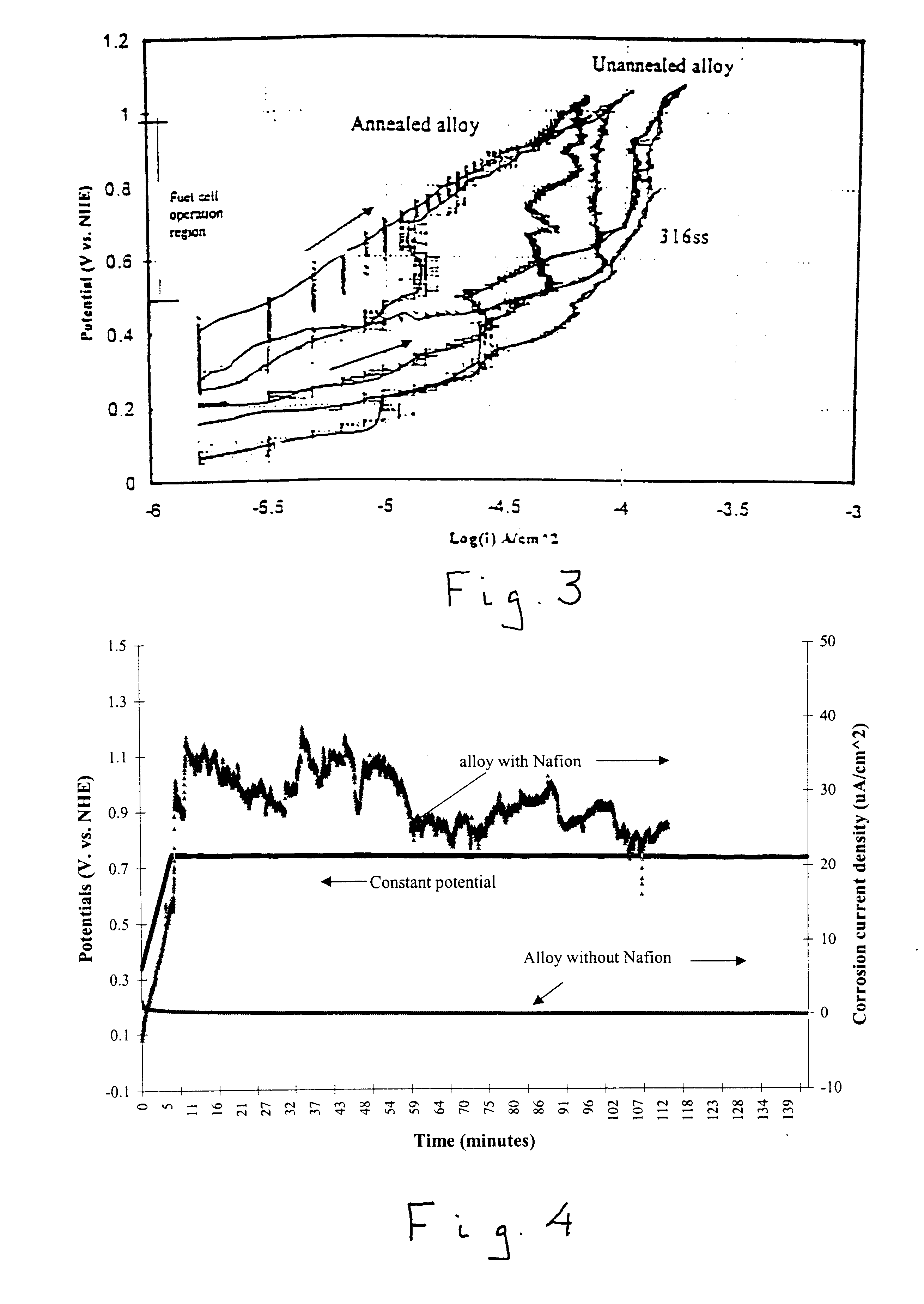Low cost metal bipolar plates and current collectors for polymer electrolyte membrane fuel cells
a fuel cell and current collector technology, applied in the field of low cost metal bipolar plates and current collectors for polymer electrolyte membrane fuel cells and fuel cell stacks, can solve the problems of high cost and low power density of the fuel cell system, high cost of graphite, and high cos
- Summary
- Abstract
- Description
- Claims
- Application Information
AI Technical Summary
Benefits of technology
Problems solved by technology
Method used
Image
Examples
Embodiment Construction
As shown in FIG. 1, a polymer electrolyte membrane fuel cell stack 10 in accordance with one embodiment of this invention comprises a plurality of polymer electrolyte membrane fuel cell units 16, 17 comprising anode electrode 11, cathode electrode 12 and polymer electrolyte membrane 13 disposed between anode electrode 11 and cathode electrode 12. Frequently, the anode electrode, polymer electrolyte membrane and cathode electrode are formed as a single component referred to as a membrane electrode assembly or MEA. Disposed between cathode electrode 12 of one fuel cell unit 16 and anode electrode 11 of an adjacent fuel cell unit 17 is bipolar separator plate 14. In accordance with one embodiment of this invention, bipolar separator plate 14 comprises a chromium-nickel austenitic metal alloy in which the amount of chromium and nickel on a combined basis is greater than about 50% by weight of the alloy.
In operation, a fuel is introduced into the anode side of the polymer electrolyte mem...
PUM
| Property | Measurement | Unit |
|---|---|---|
| area | aaaaa | aaaaa |
| pH | aaaaa | aaaaa |
| pH | aaaaa | aaaaa |
Abstract
Description
Claims
Application Information
 Login to View More
Login to View More - R&D
- Intellectual Property
- Life Sciences
- Materials
- Tech Scout
- Unparalleled Data Quality
- Higher Quality Content
- 60% Fewer Hallucinations
Browse by: Latest US Patents, China's latest patents, Technical Efficacy Thesaurus, Application Domain, Technology Topic, Popular Technical Reports.
© 2025 PatSnap. All rights reserved.Legal|Privacy policy|Modern Slavery Act Transparency Statement|Sitemap|About US| Contact US: help@patsnap.com


